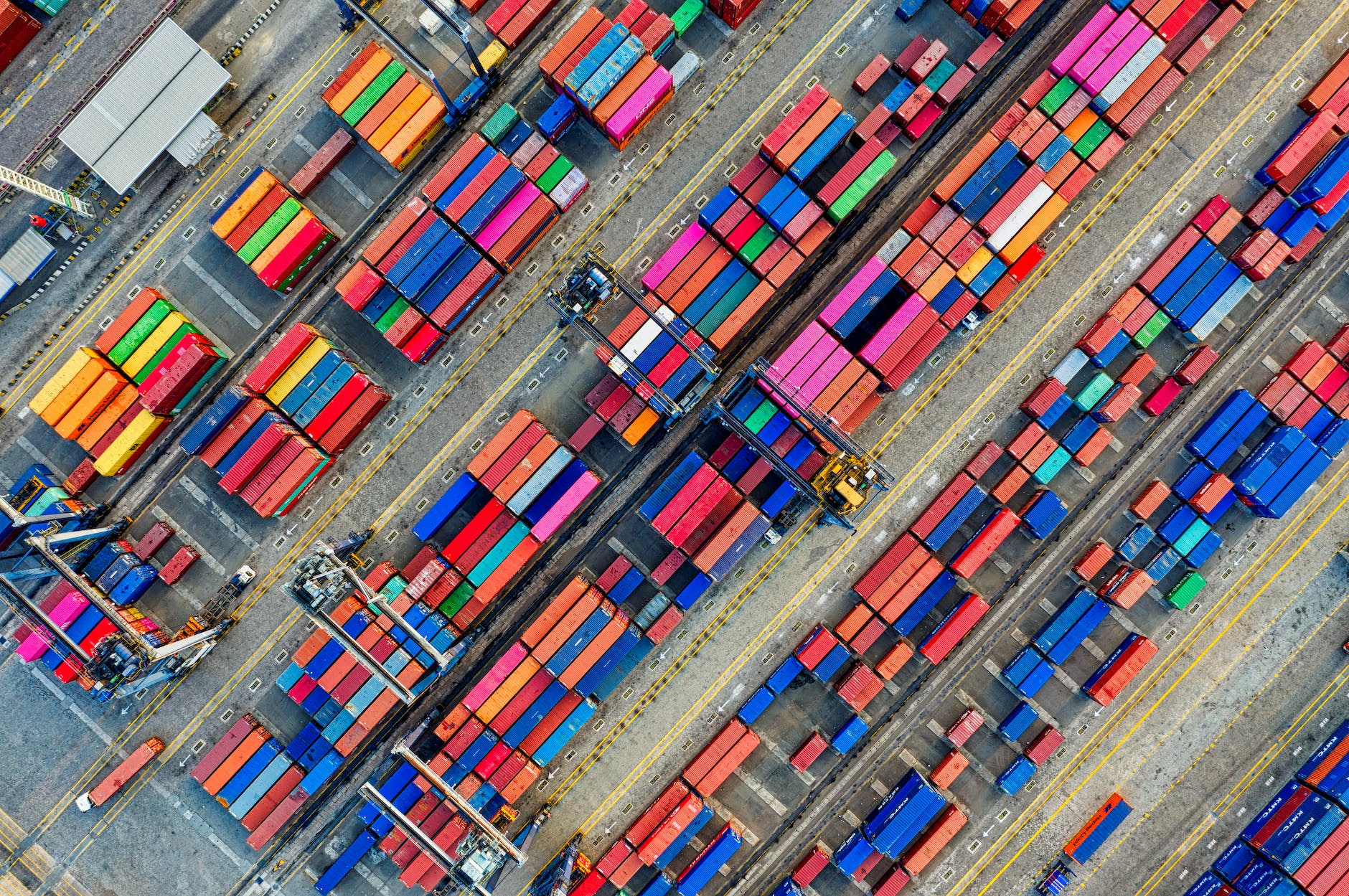In today’s global landscape, the importance of environmental cleanup and remediation cannot be overstated. With the rapid growth of industrialization and urbanization, our planet is facing unprecedented levels of pollution and contamination. The detrimental effects of environmental degradation on human health, wildlife, and ecosystems are undeniable. Fortunately, through environmental cleanup and remediation efforts, we have the opportunity to reverse some of the damage that has been inflicted upon our planet. By addressing the sources of pollution, removing harmful substances, restoring ecosystems, and implementing sustainable practices, we can pave the way towards a cleaner and healthier future for all.
Concept of Environmental Cleanup and Remediation
Definition of Environmental Cleanup
Environmental cleanup refers to the process of removing or significantly reducing pollution and contaminants from the environment. It involves identifying and eliminating any harmful substances that may be present in air, water, or soil. The primary goal of environmental cleanup is to restore and protect the purity and quality of the environment.
Definition of Environmental Remediation
Environmental remediation, on the other hand, encompasses a broader range of activities aimed at addressing environmental problems caused by pollution or contamination. It goes beyond simply removing the pollutants and focuses on restoring the affected areas to a healthier and sustainable condition. Environmental remediation may involve various techniques and strategies, including containment, treatment, and monitoring.
Key Differences Between Cleanup and Remediation
While both cleanup and remediation involve addressing environmental pollution, there are some key differences between the two processes. Cleanup usually refers to immediate actions taken to remove or contain pollutants to prevent further environmental damage. Remediation, on the other hand, is a more comprehensive approach that involves long-term measures to restore the affected areas and mitigate the impacts of pollution. Cleanup is often a part of the overall remediation process, but remediation encompasses additional steps to ensure long-term environmental sustainability.
Environmental Contamination and its Consequences
Common Sources of Environmental Contamination
Environmental contamination can originate from various sources, both natural and human-induced. Natural sources of contamination may include volcanic eruptions, weathering of rocks, and certain biological processes. However, human activities are the primary contributors to environmental contamination. Industrial discharges, improper waste disposal, improper use of pesticides and fertilizers, oil spills, and vehicle emissions are some of the major sources of environmental contamination.
The Impact of Contamination on Ecological Balance
Environmental contamination has profound impacts on the ecological balance of ecosystems. It can disrupt the natural cycles of energy and nutrient flow, damage habitats, and harm wildlife populations. Contamination can also result in the loss of biodiversity, as certain species may become more susceptible to the pollutants while others may decline or disappear. These disruptions to the ecological balance can have far-reaching consequences on the overall health and sustainability of ecosystems.
Health Risks Posed by Environmental Contamination
Contamination of air, water, and soil can pose significant risks to human health. Exposure to pollutants in contaminated environments can lead to various acute and chronic health issues. Air pollution, for example, can cause respiratory problems, cardiovascular diseases, and cancer. Contaminated water sources can result in waterborne diseases, such as cholera and dysentery. Similarly, the consumption of contaminated food due to soil pollution can lead to various gastrointestinal illnesses. Tackling environmental contamination is critical for protecting public health and preventing the spread of diseases.
Basics of Environmental Cleanup
Clean-up Procedures
Environmental cleanup procedures vary depending on the nature and extent of contamination. The first step usually involves site assessment and characterization, where the contaminated site is investigated to determine the types and concentrations of pollutants. Once the assessment is complete, appropriate cleanup methods are selected. These methods may include excavation and removal of contaminated soil, water or air treatment, barriers to prevent the spread of contamination, or even natural processes such as bioremediation. The effectiveness of the cleanup is then monitored and verified.
Technologies Used in Environmental Cleanup
Various technologies are employed in environmental cleanup to effectively remove pollutants and contaminants. These technologies may include physical methods like excavation or filtration, chemical treatments such as oxidation or reduction processes, and biological approaches like phytoremediation or bioremediation. Advanced technologies, such as thermal treatment or electrokinetic remediation, are also being used in specific cases. The selection of the appropriate technology depends on factors such as the type and concentration of contaminants, site conditions, and the desired level of cleanup.
The Role of Government Agencies in Cleanup Process
Government agencies play a crucial role in environmental cleanup efforts. They are responsible for formulating and implementing policies and regulations related to pollution prevention, control, and cleanup. These agencies often provide funding and technical support for cleanup projects, conduct inspections, and enforce compliance with environmental laws. Additionally, they may oversee the selection of cleanup technologies, set cleanup standards, and ensure proper monitoring and verification of the cleanup outcomes. Government agencies collaborate with other stakeholders, including industry, environmental organizations, and communities, to ensure effective and timely cleanup actions.
Significance of Environmental Cleanup
Prevention of Health Hazards
One of the primary reasons for undertaking environmental cleanup is the prevention of health hazards. By removing pollutants and contaminants from the environment, cleanup measures reduce the risk of exposure to harmful substances, thereby safeguarding public health. A clean environment translates into improved air quality, safe drinking water, and uncontaminated soil, reducing the incidence of respiratory diseases, waterborne illnesses, and other health conditions associated with environmental contamination.
Economic Significance of Cleanup
Environmental cleanup also holds economic significance. Contaminated environments can have detrimental effects on local economies, particularly in areas dependent on tourism, agriculture, or fishing. Cleanup efforts help restore the affected ecosystems and rebuild economic activities that rely on a healthy environment. Additionally, cleanup projects generate employment opportunities and stimulate economic growth. The long-term costs associated with health care and environmental damage resulting from contamination can far outweigh the investment required for cleanup.
Assisting in Ecosystem Restoration
Beyond its immediate benefits to human health and the economy, environmental cleanup is essential for restoring and preserving ecosystems. Ecosystems provide essential services, such as clean water, climate regulation, and habitat for biodiversity. Cleanup actions help repair and rejuvenate these ecosystems, allowing them to function effectively and sustainably. Restoring ecosystems also enhances their resilience to future environmental challenges, such as climate change, ensuring the long-term well-being of both the environment and human populations.
Highlighting Cases of Successful Environmental Cleanup
Success Stories of Cleanup in Industrial Areas
Several successful environmental cleanup projects have been implemented in industrial areas worldwide. For example, the remediation of Love Canal in Niagara Falls, New York, stands as a remarkable success story. Love Canal was contaminated with various hazardous chemicals, including dioxins and polychlorinated biphenyls (PCBs). The cleanup efforts involved the excavation and containment of contaminated soil and the construction of a clay-topped landfill cap. Today, the site has been transformed into a productive green space, demonstrating the positive outcomes of effective environmental cleanup.
Positive Impact on Urban and Residential Areas After Cleanup
Cleanup activities in urban and residential areas have resulted in significant improvements in environmental quality. For instance, the remediation of Brownfield sites, which are abandoned or underutilized properties contaminated by industrial activities, has revitalized many urban areas. By removing the pollutants and rejuvenating these sites, communities have been able to reclaim valuable land, stimulate economic development, and improve the overall quality of life for residents.
Post-Cleanup Improvement in Marine and Aquatic Environments
Environmental cleanup efforts in marine and aquatic environments have led to remarkable ecological recovery. The cleanup of Santa Monica Bay in California serves as a notable example. Through improved wastewater treatment, coastal zone management, and the reduction of stormwater runoff, the bay has seen a significant reduction in pollution, revival of fish and marine life populations, and the restoration of coastal ecosystems. Such success stories highlight the positive impact of environmental cleanup on the health and sustainability of marine and aquatic environments.
Understanding Environmental Remediation
Detailed Remediation Processes
Environmental remediation involves a series of processes tailored to address specific contamination issues. It typically starts with a detailed site assessment to determine the extent and nature of contamination. Remedial action plans are then developed, outlining the strategies and technologies to be employed. The actual remediation processes may involve various techniques, such as soil vapor extraction, groundwater pump-and-treat systems, or chemical injections to neutralize contaminants. Continuous monitoring and periodic evaluations are conducted to assess the effectiveness of the remediation and make any necessary adjustments.
Technological Aspects of Remediation
Technological advancements have played a significant role in enhancing the effectiveness and efficiency of environmental remediation. Innovative techniques such as in-situ chemical oxidation, thermal desorption, and electrokinetic remediation have emerged as powerful tools in addressing complex contamination challenges. Additionally, the use of advanced monitoring systems and remote sensing technologies enables real-time data collection and analysis, allowing for more informed decision-making during remediation processes. These technological aspects contribute to more targeted and cost-effective remediation solutions.
Involvement of Government and Environmental Agencies in Remediation
Government and environmental agencies play a pivotal role in environmental remediation. They establish policies, regulations, and guidelines that set the framework for remediation activities. These agencies provide technical support, review and approve remediation plans, and oversee the implementation and monitoring of remedial actions. Collaboration between government agencies and private sector entities, such as environmental consulting firms and remediation contractors, is crucial in ensuring that remediation efforts are executed properly, within regulatory guidelines, and meet the desired remedial objectives.
Importance of Environmental Remediation
Preventing Further Environmental Damage
Environmental remediation is crucial in preventing further environmental damage caused by contamination. By removing or neutralizing pollutants, remediation actions stop the spread of contaminants and reduce their impact on surrounding ecosystems. It helps halt the degradation of air, water, and soil quality, preventing the pollutants from entering food chains and further endangering human health and natural habitats. Timely and effective remediation efforts are essential for curbing the long-term consequences of contamination.
Restoring and Enhancing Soil Quality
Soil quality is essential for supporting agricultural productivity, maintaining biodiversity, and mitigating climate change impacts. Environmental remediation focuses on restoring and enhancing soil quality by removing or reducing harmful substances from contaminated soils. Techniques such as soil excavation, chemical treatments, and in-situ remediation methods help restore the natural fertility and health of the soil, allowing for sustainable agriculture and ecosystem functioning.
Reducing Land and Water Pollution
Environmental remediation is instrumental in reducing land and water pollution. Contaminated soils can release pollutants into water bodies through leaching and runoff, contributing to water pollution. Remediation activities prevent the spread of contamination into water sources, ensuring the integrity of freshwater systems. By eliminating or treating polluted soils and groundwater, environmental remediation helps mitigate the risks associated with land and water pollution, safeguarding aquatic ecosystems and preserving water resources for future generations.
Case Studies of Effective Environmental Remediation
Successful Industrial Remediation Cases
Various industrial remediation projects have achieved remarkable success in addressing contamination issues. The cleanup of the Hudson River in New York is a notable example. The river was contaminated with polychlorinated biphenyls (PCBs) released by industrial activities. The cleanup involved dredging contaminated sediments and implementing capping techniques. The project resulted in a significant reduction in PCB levels in the river, leading to the recovery of fish populations and the restoration of the river’s ecological balance.
Effective Soil and Groundwater Remediation Examples
Soil and groundwater remediation projects have demonstrated effective techniques for restoring these essential resources. The remediation of the Amoco Oil Refinery site in Sugar Creek, Missouri, is a notable case. The site was contaminated with various petroleum hydrocarbons, which had polluted the soil and groundwater. The remediation involved the combination of soil vapor extraction, air sparging, and groundwater pump-and-treat systems. As a result, the site was successfully remediated, and the soil and groundwater quality improved significantly.
Restoration of Marine and Coastal Areas Through Remediation
Environmental remediation has also been successful in restoring marine and coastal areas affected by contamination. The remediation of the Boston Harbor in Massachusetts stands as a remarkable achievement. The harbor was severely polluted due to wastewater discharges and industrial activities. Through the implementation of modern wastewater treatment plants and the reduction of industrial discharges, the harbor’s water quality improved significantly. This restoration led to the recovery of marine life, improved recreational opportunities, and substantial economic benefits for the region.
Challenges in Environmental Cleanup and Remediation
Lack of Funding
One of the significant challenges in environmental cleanup and remediation efforts is the lack of adequate funding. Cleanup projects can be expensive, requiring resources for site assessments, remedial actions, monitoring, and verification. Limited financial resources often hinder the implementation of cleanup activities, particularly in low-income communities and developing countries. The availability of funding from governments, private entities, and international organizations is critical to support and accelerate cleanup and remediation projects worldwide.
Difficulties in Treatment of Certain Contaminants
Some contaminants pose significant challenges in terms of treatment and removal. For example, persistent organic pollutants (POPs), such as dioxins and polychlorinated biphenyls (PCBs), are notoriously difficult to eliminate due to their chemical stability and resistance to degradation. Treating contaminants like these requires specialized techniques, expertise, and often long-term monitoring. Overcoming these technical difficulties is essential for successful environmental cleanup and remediation.
Challenges in Monitoring and Evaluation
Monitoring and evaluating the effectiveness of environmental cleanup and remediation can be challenging. The long-term nature of these processes often requires sustained monitoring efforts, which can be resource-intensive. Furthermore, establishing appropriate metrics and indicators to assess the success of cleanup activities and their impact on the environment can be complex. Addressing these challenges necessitates the development of standardized monitoring protocols and frameworks, as well as the utilization of advanced monitoring technologies.
Future Prospects of Environmental Cleanup and Remediation
Emerging Technologies in Cleanup and Remediation
The future of environmental cleanup and remediation holds promising advancements in technology. Emerging technologies, such as nanoremediation, bioreactors, and phytotechnologies, are being developed and tested to enhance the effectiveness and efficiency of cleanup and remediation processes. These technologies offer innovative approaches for targeting specific contaminants and achieving more sustainable and cost-effective solutions. Continued research and development in this field will likely unlock new possibilities and revolutionize environmental cleanup practices.
Government Initiatives for Boosting Cleanup and Remediation Efforts
Government initiatives play a pivotal role in boosting cleanup and remediation efforts. Governments are increasingly recognizing the importance of addressing environmental contamination and allocating resources to support cleanup projects. They are formulating policies, regulations, and incentives to encourage industries and communities to engage in cleanup and remediation activities. Additionally, collaboration between governments at national and international levels facilitates knowledge sharing, capacity building, and the development of standardized approaches to enhance cleanup and remediation efforts.
Role of NGOs and Activists in Encouraging Cleanup and Remediation
Non-governmental organizations (NGOs) and activists play a vital role in encouraging and advocating for cleanup and remediation. They raise awareness about environmental contamination issues, mobilize communities, and put pressure on governments and industries to take action. NGOs often collaborate with governments, research institutions, and industry stakeholders to drive change and facilitate the implementation of cleanup and remediation projects. The active participation of NGOs and activists is crucial in ensuring that cleanup and remediation efforts remain a priority in the global environmental agenda.
In conclusion, environmental cleanup and remediation are critical processes for addressing contamination issues, protecting human health, and restoring ecosystems. They involve a range of procedures, technologies, and collaborations with government agencies, all aimed at reducing pollution and restoring environmental quality. While challenges such as funding, treatment difficulties, and monitoring persist, the future holds promising prospects with emerging technologies, government initiatives, and increasing awareness facilitated by NGOs and activists. By prioritizing and investing in environmental cleanup and remediation, societies can achieve cleaner and healthier environments, sustainable economic development, and the preservation of natural resources for future generations.





